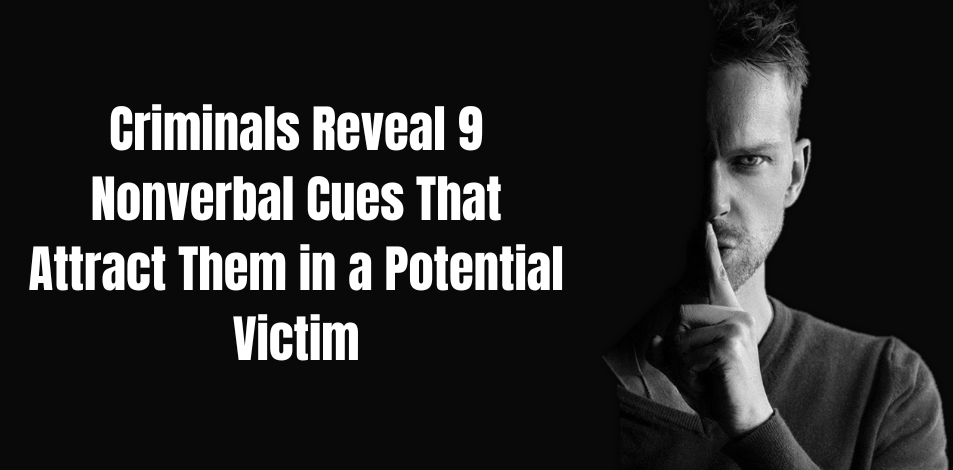
Is there such a thing as a perfect victim or are people chosen randomly? Is it just bad luck? A case that occurred in the wrong place and at the wrong time, or do the perpetrators specifically target their victims? Does our body language give signals that we are easy targets? Criminals seem to think so. In fact, there are some “non-verbal cues” that criminals look for in potential victims.
Did you know that it only takes a criminal 7 seconds to evaluate a potential victim? Just think about that for a moment. Seven seconds is all it takes to scan you and decide whether to rob, assault, rape, or kill you.
Does this short amount of time mean it’s easy to pick out a potential victim? Isn’t it important to choose the right person?
I mean, criminals want an easy target, right? Someone who is not likely to fight back, scream, or make a scene. They don’t want to get caught or get hurt themselves. So, shouldn’t they take into account a number of factors and take their time?
Well, it obviously doesn’t take time, and it’s easy to spot those at risk. The other surprising thing is that the people you think are potential victims, i.e. older people and women, are not necessarily at the top of the list. In fact, age and gender are not important factors when choosing a victim.
What non-verbal cues do criminals use to search for a potential victim?
Instead, the type of gait you have, how fast you walk, where your hands are, and whether or not you make eye contact. These are all non-verbal cues that criminals look for.
All of these signals give criminals clues about how likely you are to fight back or resist. So what exactly are they looking for in a potential victim?
Research suggests that there are several things that criminals pay particular attention to. One study showed videotape of crowded streets in New York of convicted felons. They asked perpetrators to select potential victims on a scale from 1 (easy scam) to 10 (high risk). Then they asked why they preferred some people over others.
The results were surprising. In the videos, each prisoner selected the exact same people as potential victims.
Here are the 9 non-verbal cues revealed by criminals:
Walk a short distance
Short steps are evidence of the criminal’s shyness or caution. We take baby steps when we suffer an injury because we try not to put pressure on the injured foot.
Related : 8 Signs of Narcissistic Supply: Are You Feeding the Manipulator?
Small, elegant steps are also a sign of femininity. In ancient times, geisha would curl their feet to walk in small steps to appear more feminine. So small steps are a sign of weakness.
Walking with abnormally long steps
On the other hand, you don’t want to exaggerate your walking stride to make it appear unnaturally long. Why? Because this will make you look clumsy and unprofitable. You will stand out from the crowd and paint a target on your back.
Drag your feet
Dragging your feet is one of the nonverbal cues that criminals will pick up on. It suggests a number of things. You’re tired and not focusing on your surroundings, or your feet hurt and you can’t lift them properly. Either one indicates that you are a potential victim.
Raise your feet
Likewise, raising your feet as if you are walking is also an indication that your feet are hurting. Maybe you’re wearing new shoes or they’re tight and you have a blister? Walking in this unnatural way indicates that something is not quite right. It sticks to criminals.
Swinging the arm asynchronously
An unnatural gait where your arms swing unnaturally with your leg step is a big red flag for criminals. It makes you look clumsy and clumsy. You don’t look like you’re an athlete. You don’t seem to be able to escape easily if you are attacked. This type of gait stands out and attracts attention.
Arms pressed to your body
It is normal for you to swing your arms from side to side to balance the steps of your legs. Walking with your arms pressed to the sides of your body shows a very shy nature.
What this tells the criminal is that you are making yourself as small as possible. You don’t want to see. You are trying to be invisible. You want to blend into the background. When we are injured, we bring our limbs closer to our body to protect our vital organs.
Walking very fast
You may think that walking briskly exudes confidence and authority. This person is busy; They have an important place to be and they are rushing to get there. But walking fast does not indicate this to the criminal.
Instead, the criminals said walking too fast made them think the person was anxious or nervous. They also said that people walking faster did not pay attention to their surroundings and were busy. This made them easy targets.
Walk slowly
Infected animals in the wild move more slowly than the rest of the herd. This makes it easier for predators to detect and select them. This is the case in human society. A person who walks slowly may be tired, depressed, or simply not paying attention.
Slouch shoulders
Imagine you are a criminal and you have to choose whether to attack someone with slumped shoulders or someone standing upright with their chest open. Who will you choose? This is obvious when you think about it. Drooping shoulders indicate depression, low self-worth, and ease of choice.




